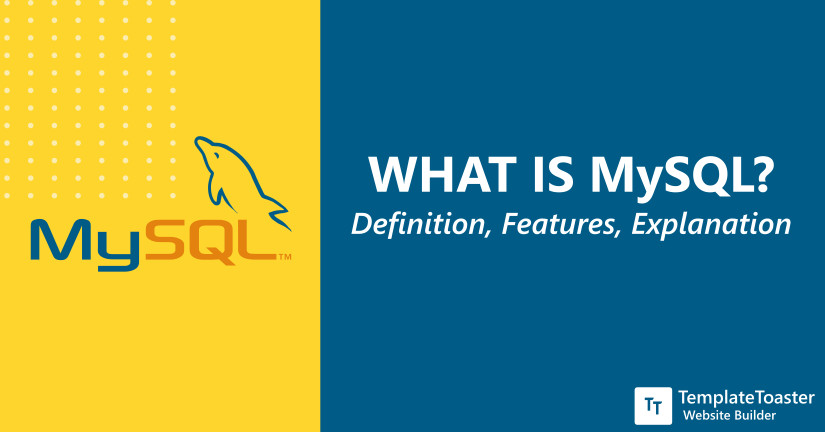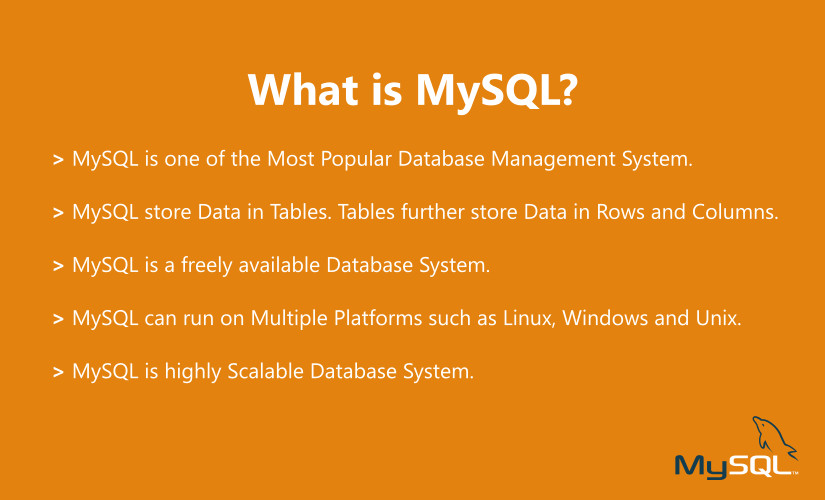What is MySQL? Definition, Features, Explanation

If you are one of those who are looking for an answer to What is MySQL? then here is the answer it is an open-source relational database management system. Well, if this one sentence explanation is not enough for you to perceive the whole concept, then let’s just split up this term into more comprehensible bits.
In this TemplateToaster Website Builder software‘s blog post I will explain this in an easy way.
For all the webmasters who are new in the industry, terms like what is MySQL, uses of MySQL, Database, SQL, etc. can be a little daunting. But this article will serve the purpose to confront them all. And you will able to see the big picture that can further help you analyze the relevance of these terms for your website.
First off, to understand MySQL, you need to figure out Database and SQL first. However, if you are already aware of them, you can directly jump over to tutorial of what is MySQL segment.
What is MySQL? Tutorial for beginners
It is one of the most popular database management systems originally launched way back in 1995. SQL is the core of MySQL. And ‘My’ with ‘SQL’ is there because it’s the name of its co-founder Michael Widenius’ daughter. It is an open-source relational database management system.
MySQL is a freely available database system. However, there are several paid editions also available with which you can use advanced functionality. MySQL is easy to use as compared to other database software such as Microsoft SQL Server and Oracle database etc. It can be used with any programming language, but is largely used with PHP.
MySQL can run on multiple platforms such as Linux, Windows, Unix, and an information schema to define and manage your metadata. You can either install it on your local system or even on the server as well. It is a really flexible, scalable, fast, and reliable solution. You can easily Check MySQL Version after reading this tutorial.
A Brief Introduction to Database
In this technically advanced era, you deal with the database almost everywhere. For instance, your area’s electricity provider is relying on a database to administer the related service such as managing bills, clients complaints, new connection establishment, connection withdrawal, etc.
We have countless real-life examples that show how almost every time we are surrounded by the database. The database is nothing but just an organized collection of data that can be easily updated, edited, managed, and accessed. However, we need a database management system to maintain the database and also need to know how Database Works. Typically, the data is stored in tabular format and that makes it easy to access the data in various ways. A table contains rows and columns. And a table may relate to another table using a relationship. Hence, this is where SQL comes to play.
Introducing SQL
Be aware that MySQL and SQL are not the same. SQL in MySQL stands for Structured Query Language. It is the standard language used to interact with the database. And MySQL is a relational database management system that helps to manipulate database stored in different tables in the computer.
The relational database systems (RDBMS) yield much better performance for directing data over desktop database programs.
Now you have a clear idea about the database and SQL. It’s time to move to our main subject i.e. what is MySQL now.
What are key Features of MySQL?
- Ease of Management – It is pretty easy to download and use the software.
- High performance – It provides you fast loading utilities with different memory cache.
- Scalable – With MySQL, you can scale anytime you like. It is really easy to create data warehouses including an enormous amount of data.
- Compatibility – MySQL is compatible with all modern platforms like Windows, Linux, Unix.
- Performance – MySQL gives you high-performance results without losing essential functionality.
- Complete Data Security – Only the authorized users can access the database. Complete security for the data.
- Low Cost – It is free to use.
- Memory Efficiency – MySQL has low memory leakage.
What is MySQL – In nutshell
I hope this article has explained MySQL and gives a better knowledge of what MySQL is. Working with MySQL has always been easy. Moreover, even I tried to make things related to MySQL more clear and presentable for you. But if you still are unable to decide whether or not to use MySQL. However, the answer depends on what you are using it for and what your objective is. While the function of MySQL may vary with the project requirements. If you find anything unclear or wish to add something to it, then feel free discuss it in the comments below.
Build a Stunning Website in Minutes with TemplateToaster Website Builder
Create Your Own Website Now
Thanks for sharing this informative article! From where should i install MySQL?
What is the difference between phpmyadmin and MySQL?
This is the best way to inform the beginners about all new skills and technology.
The good point of this software is that it is free and very easy to operate.
Thanks for sharing such kind of articles, this is very helpful for the beginners to solve their problems.